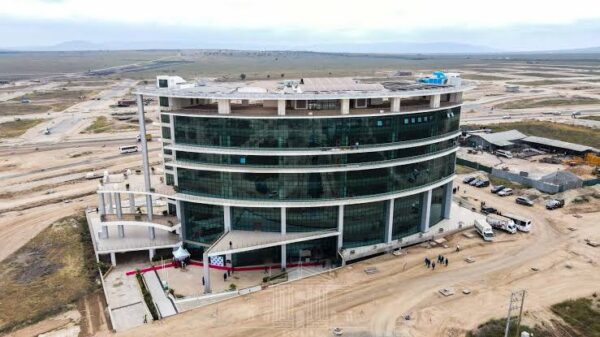WASHINGTON, December 22 – Head held high and with a steady gait, Donald Fortune walked toward a waiting room filled with others who came to collect food stamps.
"I put my pride to a side, came down here to get me some food stamps today," said Fortune, a tall 45-year-old wearing a spotless white T-shirt and jeans, and carrying a carefully folded black leather jacket.
He just wants to eat his fill, something he said he hasn\’t done since losing his job four months ago.
Fortune headed to the office early in the morning so he could still look for work during the day, now a daily routine for him. He said he has contacted up to 30 companies in a day.
"Everybody keeps saying they don\’t have no money. They are not doing no hiring right now. I have been looking everywhere," Fortune said.
"You used to walk down the street, McDonald\’s would hire you just like that. They don\’t do that no more."
The economic downturn plaguing the United States has brought a rising demand for food stamps, which come in the form of a debit card and can be used in most supermarkets.
"I have seen spikes in uses (of food stamps) based in economic downturns, but I have never seen anything like this," says Clarence Carter, director of the capital city\’s human services department.
The number of Americans relying on food stamps exceeded 30 million — 10 percent of the population — for the first time in September. A four-person household must earn less than 2,300 dollars per month (1,635 euros) to qualify for food stamps.
The federal government\’s food stamp program has been renamed the Supplemental Nutrition Assistance Program (SNAP) to reflect a new focus on healthy and more accessible foods.
A survey earlier this month found that homelessness and hunger increased in an overwhelming majority of 25 US cities in the past year.
The number of people seeking food assistance for the first time was up in all 21 cities with data on the issue, and was "particularly notable among working families stressed by the increase in food prices and the slowdown in the economy," said the US Conference of Mayors report.
Out of 25 cities surveyed, 83 percent said homelessness in general had increased over the past year while 16 cities cited a rise in the number of families who had been forced out of their homes.
Unemployment has also hit 6.7 percent of the working population, the highest level in 15 years.
"We have a lot more unemployed people coming to the agency that have been laid off recently due to the economy, and a lot more young people," said Felisia Brown, case manager for the district food stamp office in northeastern Washington.
One of those young people was Nikita Ford, 20, another first-time food stamp applicant who studies law at Howard University.
"The cost of everything went up: tuition, housing, meals, everything!" she said.
"It\’s kind of like less burden on my parents. With the economy they are struggling to give me a little bit of money here and there to help me pay for things."
The economic crisis has caused a spike in those needing food assistance, said Brian Smith, chief operating officer of the capital area food bank, which set up a hunger hotline that has seen calls go up by 248 percent over the past six months.
"It\’s changing the face of hunger and the people who qualify," he said.
"It\’s not necessarily the lowest social economic classes but it\’s more of the lower middle class who now, in the difficult economic climate that we are all facing, qualify for food stamps programs."


































